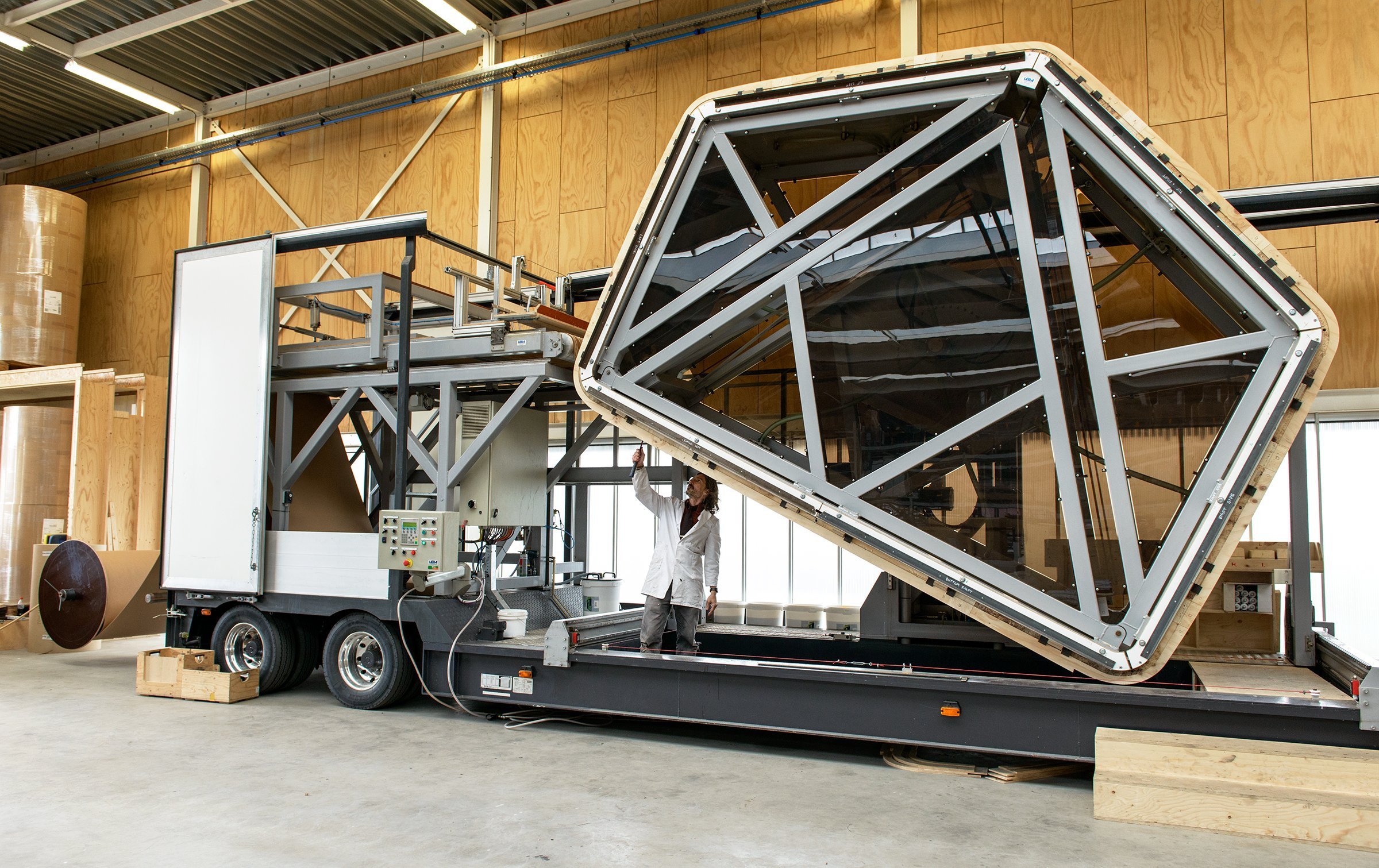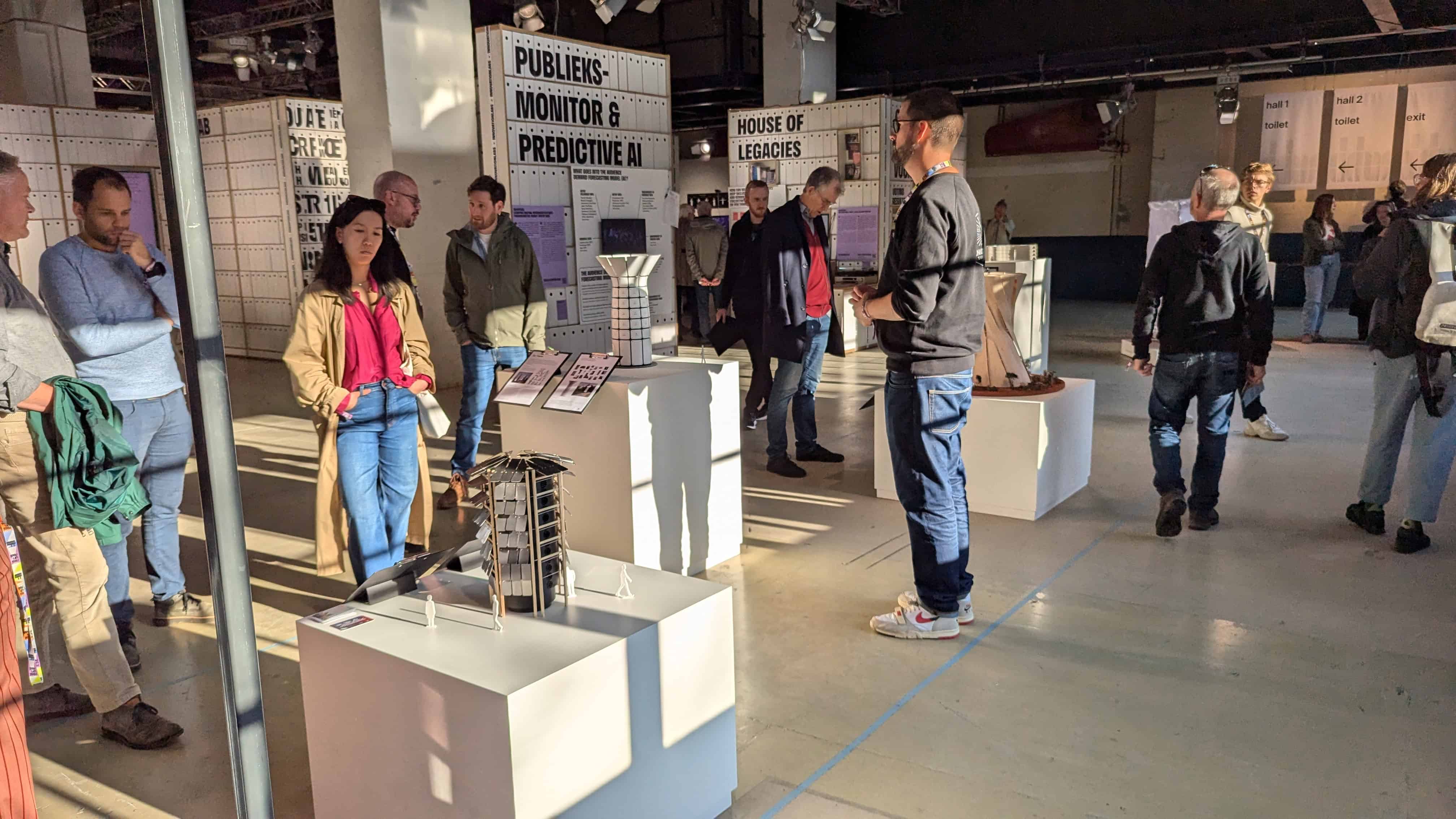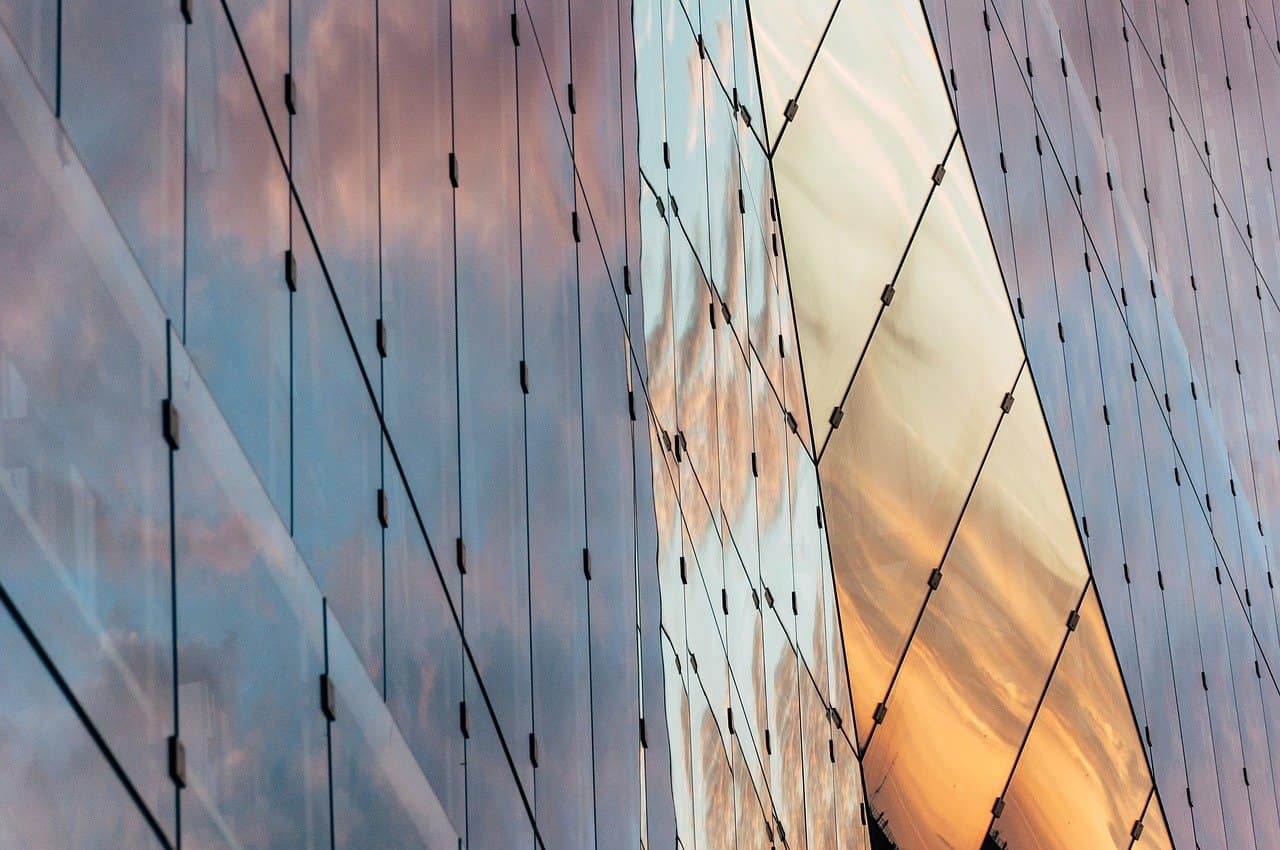
The Dutch Design Week is not all about new gadgets or cool gadgets. Instead it gives designers the space to explore the future. What will our life be like in ten years time? For instance, how will we build our houses and can we do that in a more sustainable way? Oep Schilling makes and sells houses out of cardboard. According to the designer, ‘wrapping’ a house like this is up to eight times more sustainable than building a traditional house. He traveled to DDW with three trucks from Amsterdam. At Sectie-C, he is introducing visitors to the Wikkelhouse and to his quest for more sustainable building construction and housing.
The cardboard houses are made up of a range of segments that can easily be attached to each other. These segments are ‘wrapped’ together in a giant machine. A large cast serves as the basis for each segment. In two 45 minute-long sessions, 320 meters of cardboard is wrapped around the cast. 24 layers in total. A layer of plywood is placed between the layers of cardboard so that the corrugated cardboard is not crushed. The exterior is finished with thermowood cladding (thermally modified wood).
Willy-wonka machine
The ‘Willy-Wonka-like machine’ was almost lost. It was standing somewhere in a barn gathering dust until Schilling came across the shrink wrap machine. “I was immediately fascinated by this bizarre machine and decided that I would take it off his hands.” Schilling is referring to René Snel, a son of a paper merchant and himself a technician. “He had an eye for quality and started to experiment. This produced a tomato crate that he had wound from corrugated cardboard. It was so incredibly strong. That crate lasted for four years.”
Soon Snel decided to make the machine bigger so that he could prove that cardboard was strong enough to make a house. “After a lot of time, money and effort, he finally managed to do that. This was around the turn of the century. People weren’t that concerned with the climate or sustainable building back then. He couldn’t sell the houses.”
The machine ended up in Snel’s shed, where it remained gathering more dust for quite some time. Until Schilling bought the machine. “It was now 2012 and Al Gore, among others, put climate change on the agenda. It was a great opportunity to show that there are also building methods that place less strain on the earth. We want to tell that story with the Wikkelhouse.”

Where does the material come from?
“I come from a time when I took some things for granted. Even though that’s nonsense, of course. Precisely because of the issues at hand. The plastic soup in the ocean and micro-plastics that are all over the place. But also CO2 emissions, global warming and more of these issues. We are becoming increasingly aware that we only have one earth and that we can’t go on like this,” Schilling explains. His goal is to ‘wrap’ together a completely circular cardboard house. “To do this, you need to think about how to use material in a smarter and more sustainable way than is currently the case. We are striving for the lowest possible negative impact on the earth. After its service life, the cardboard that we use can be disposed of as wastepaper.”
But the Wikkelhouse is not (yet) completely circular: “Most likely that will never happen, but we are always trying to get a step closer to that goal. The first thing you do is explore: where does your material come from?” The plywood that Schilling uses in the houses is made of organically degradable wood, although this wood is glued. “That glue is rubbish, a lot of stuff that is glued ends up in the incinerator. That can’ t be recycled. We are now in talks with a large plywood manufacturer to examine whether there are any other, more sustainable alternatives to this glue.”
Glue is difficult to break down, the designer states: “Nature has a lot of problems with it. Moreover, it is almost impossible to separate it from other materials. Glue is actually just a plastic which comes from petroleum. For a long time, we have mainly focused on chemically modifying and exploring the unlimited possibilities that petroleum has to offer. No one thought about the fact that the degradation time of these reprocessed materials is extremely long.”
Observe what you can learn from nature
That is why Schilling advocates a different way of thinking: “Now the time has come for us to apply our intelligence in order to think about how we can close the circle again. And move towards a chain where raw materials are made into products, but can just as easily be transformed back into raw materials. I think we can learn a lot about this from nature. Scientists are researching this more and more as well. For example, how do mussels attach themselves to rocks underwater? This can lead to interesting insights and we should pay much more attention to these aspects.”

In order to improve their own processes, Schilling no longer uses a wood stain, but uses thermowood instead to finish the houses. That’s better for the environment, he says. The glue they use is also less harmful to the environment: “Glue is an essential product for builders. It does its job well and is also widely used in the construction industry. But I think that 95 percent of all adhesives are synthetic. We used wood glue, but have switched to a more sustainable alternative. A wrapped house is up to eight times more durable than the build of an ordinary house with our method. But we’re not quite there yet.”
As Schilling says, there is an arc of tension between organically degradable materials and the comfort of the end users: “Starch glue is completely biodegradable. But people do have to constantly take care of their homes after periods of rain. This is unsustainable; we want a Wikkelhouse to last at least fifty years or more. In the meantime, we are still on the lookout for better materials that have less impact on the planet. At the same time, we don’t want the quality of the houses to be adversely affected.”
During Dutch Design Week, Schilling and his team aim to ‘wrap’ a segment each day at Section-C. There are two segments which have already been completed so that visitors are able to get an impression of the cardboard houses.






